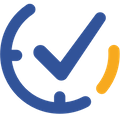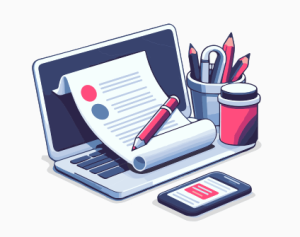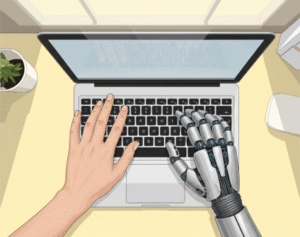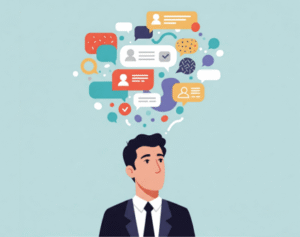Remember the days when a paper planner was your best friend for staying organized? Well, times have changed, and productivity apps have revolutionized the way we manage our lives. Let’s take a journey through the evolution of these digital helpers and discover how they’ve transformed from simple to-do lists to AI-powered personal assistants.
The Humble Beginnings: Paper and Pen
Before the digital revolution, productivity tools were decidedly analog. In the early 20th century, people relied on small, pocket-sized diaries to jot down daily tasks, engaging their memory through the physical act of writing. As the century progressed, more structured systems emerged. The Day-Timer, introduced in the 1940s, offered loose-leaf pages in a binder for flexible planning. The 1984 launch of the FranklinCovey planner marked a significant advancement, introducing priority matrices, goal-setting worksheets, and values clarification exercises, encouraging users to align daily activities with broader life goals.
Even in today’s digital age, many still prefer paper planners for their tactile engagement, distraction-free planning, and customization options. However, a hybrid approach often proves most effective. Combining the memory-enhancing benefits of handwriting with the convenience of digital reminders and collaborative features can create a powerful productivity system. The key is to experiment with different methods – perhaps using a paper planner for personal reflections and a digital app for work tasks – to find the perfect balance that keeps you organized and motivated.
Did you know? In ancient times, people used to tie knots in string to remember important tasks. Talk about a low-tech solution!

The Digital Dawn: Enter the Desktop
The late 1980s and early 1990s marked a pivotal shift in personal productivity with the advent of digital organizers on desktop computers. Programs like Lotus Organizer and Microsoft Outlook Calendar transformed PCs from mere work tools into comprehensive personal assistants. These applications allowed users to create, edit, and manage their schedules and to-do lists digitally, introducing features like easy rearrangement of tasks, recurring event settings, and quick search functionality.
This digital leap brought unprecedented efficiency and control to personal organizations. Users could now set reminders, categorize tasks, and view their entire schedule at a glance. The satisfaction of completing tasks with a simple click and the ability to easily update and store information revolutionized time management. This new approach to personal productivity laid the groundwork for future innovations, setting the stage for the mobile revolution that would follow and fundamentally changing our relationship with tasks and scheduling.
Quick Tip: If you’re feeling nostalgic or want to keep things simple, many of today’s productivity apps offer “retro” views that mimic the look of old-school desktop organizers.

Productivity On the Go: The Mobile Revolution
Just when we thought it couldn’t get any better, smartphones came along and turned the productivity world upside down. These devices, coupled with innovative apps, allowed us to manage tasks, schedules, and projects anytime, anywhere. The ability to capture ideas, set reminders, and organize information on the go marked a significant shift in how we approached time management and personal organization.
Apps like Evernote, Trello, and Planndu introduced features that quickly became essential:
1. Cloud syncing: Update your grocery list on your phone, and it’s instantly available on your laptop.
2. Real-time collaboration: Share a project board with your team and watch ideas come to life together.
3. Push notifications: Never forget a deadline or appointment again!
Fun Fact: The average person checks their phone 96 times a day. Make those checks count by using productivity apps to stay on top of your tasks!

The AI Assistant by Your Side: Welcome to the Future
AI is changing how we use productivity apps. These new tools don’t just list tasks – they learn from how you work. By watching your habits, they suggest better ways to plan your day and get things done. Think of them as smart assistants that help you work smarter, not harder. They can even connect with other devices and apps to give you a complete picture of your day, from work tasks to fitness goals.
Here’s what the future of productivity apps might look like:
1. Personalized task suggestions: “Based on your past behavior, now might be a good time to start that report due next week.”
2. Smart scheduling: “I’ve noticed you’re most productive in the mornings. Shall I schedule your important tasks before noon?”
3. Integrated ecosystems: Your productivity app talks to your fitness tracker, calendar, and smart home devices to optimize your entire day.
Pro Tip: As AI features become more common, take the time to “train” your apps by consistently using them and providing feedback. The more they learn about you, the more helpful they’ll become!

Making the Most of Productivity Apps: Tips for Success
With so many options available, how do you choose the right productivity app for you? Here are some tips:
1. Identify your needs: Are you a visual person who loves kanban boards? Or do you prefer simple, text-based lists?
2. Begin gradually: Don’t try to overhaul your entire system overnight. Begin with one app and gradually incorporate it into your routine.
3. Experiment: Many apps offer free trials. Take advantage of these to find the perfect fit.
4. Use integrations: Look for apps that play well with your existing tools to create a seamless workflow.
5. Regular reviews: Set aside time each week to review and update your tasks and systems.
Remember, the best productivity app is the one you’ll use consistently!
The evolution of productivity apps reflects our ever-changing relationship with technology and work. From paper planners to AI assistants, these tools have come a long way in helping us manage our busy lives. So, are you ready to take your productivity to the next level? Dive into the world of digital organization, experiment with different apps, and find your perfect productivity partner. The future of getting things done is bright, personalized, and right at your fingertips!




